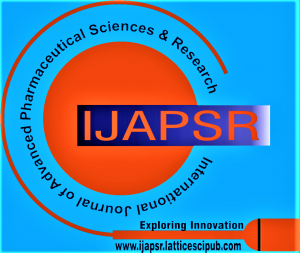![]()
Conductive Nanocomposites Based on Graphene and Natural Polymers
Nasser Thallaj
Prof. Dr. Nasser Thallaj, Department of Pharmaceutical Chemistry and Drug Quality Control, Faculty of Pharmacy, Al-Rachid Privet University, Damascus (Syria), West Asia.
Manuscript received on 06 September 2024 | Revised Manuscript received on 22 September 2024 | Manuscript Accepted on 15 October 2024 | Manuscript published on 30 October 2024 | PP: 7-27 | Volume-4 Issue-6, October 2024 | Retrieval Number: 100.1/ijapsr.F405404061024 | DOI: 10.54105/ijapsr.F4054.04061024
Open Access | Editorial and Publishing Policies | Cite | Zenodo | OJS | Indexing and Abstracting
© The Authors. Published by Lattice Science Publication (LSP). This is an open-access article under the CC-BY-NC-ND license (http://creativecommons.org/licenses/by-nc-nd/4.0/)
Abstract: This thesis focuses on the development of conductive nanocomposite materials based on graphene and natural polymers such as cellulose and chitosan. Graphene, a single layer of carbon atoms arranged in a honeycomb lattice, exhibits exceptional electrical, mechanical, and thermal properties, making it an attractive filler for polymer composites. However, the challenge lies in effectively dispersing graphene sheets within polymer matrices. The work presented explores new strategies for grafting polysaccharide chains onto oxidized graphite (graphene oxide) to improve its compatibility and dispersion in cellulose and chitosan matrices. The resulting composites were doped with gold or nickel nanoparticles to further enhance their electrical and catalytic properties. Detailed characterization techniques, including spectroscopic and microscopic methods, were employed to analyze the structure, morphology, and properties of the developed nanocomposites. The thesis is organized into three main parts: 1) a literature review on graphene, polysaccharides, and their bio composites; 2) a description of the experimental materials and methods; and 3) a scientific discussion of the results, presented in the form of three research publications. The findings demonstrate the successful synthesis of conductive nanocomposites with improved compatibility and performance, opening up new avenues for the application of these sustainable and multifunctional materials in areas such as electronics, catalysis, and electromagnetic shielding.
Keywords: Conductive Nanocomposites; Graphene; Natural Polymers (Cellulose and Chitosan); Polysaccharide Grafting; Gold Nanoparticles; Nickel Nanoparticles; Electrical Properties; Catalytic Properties.
Scope of the Article: Pharmaceutical Chemistry
